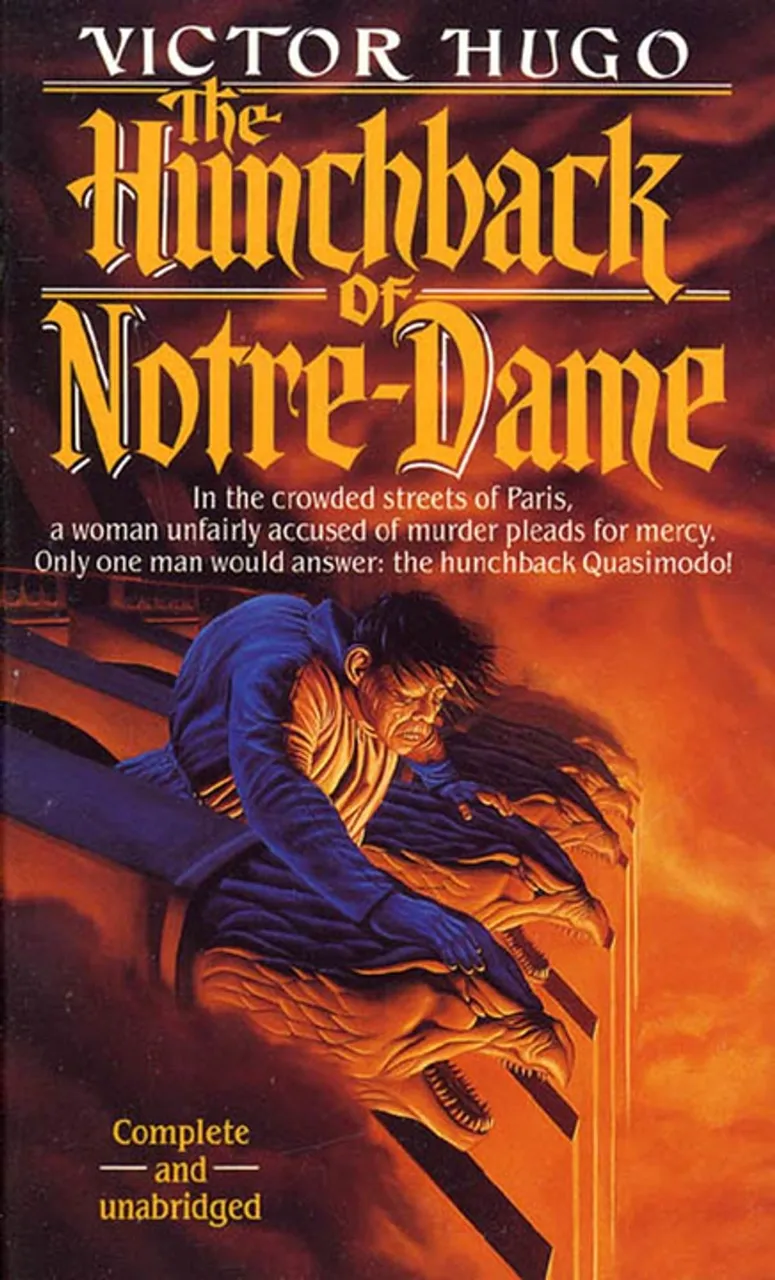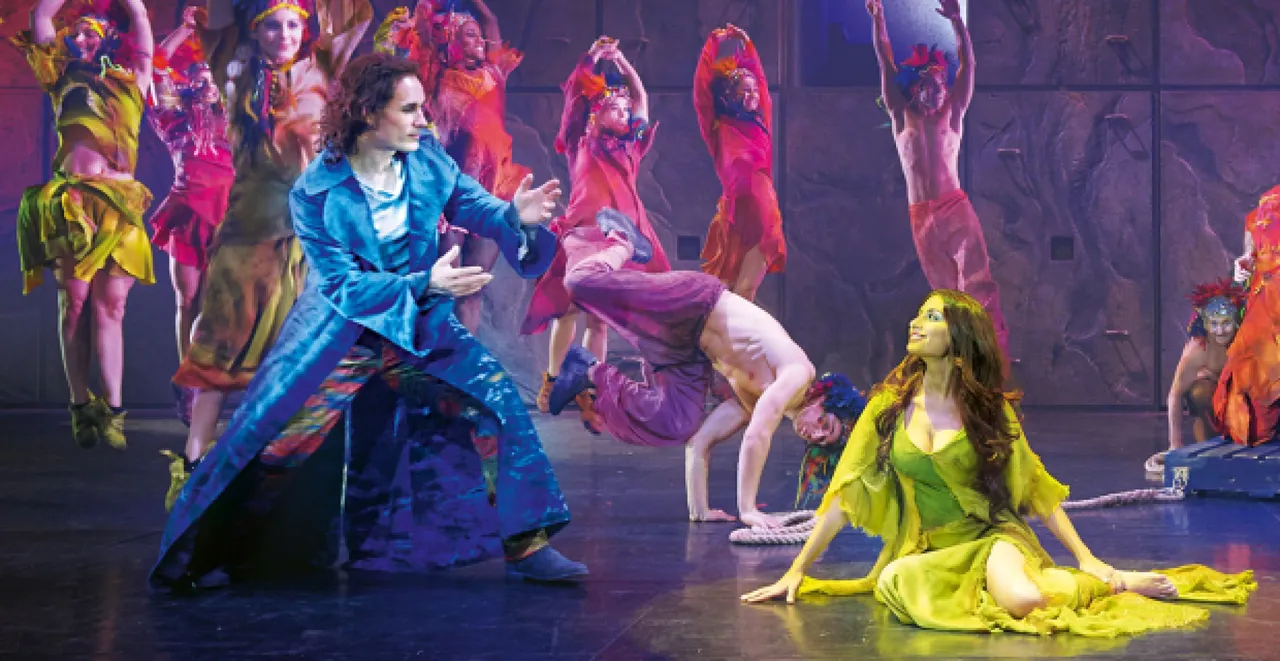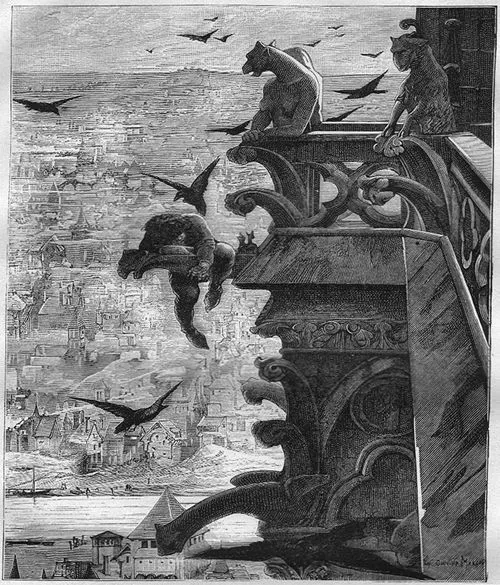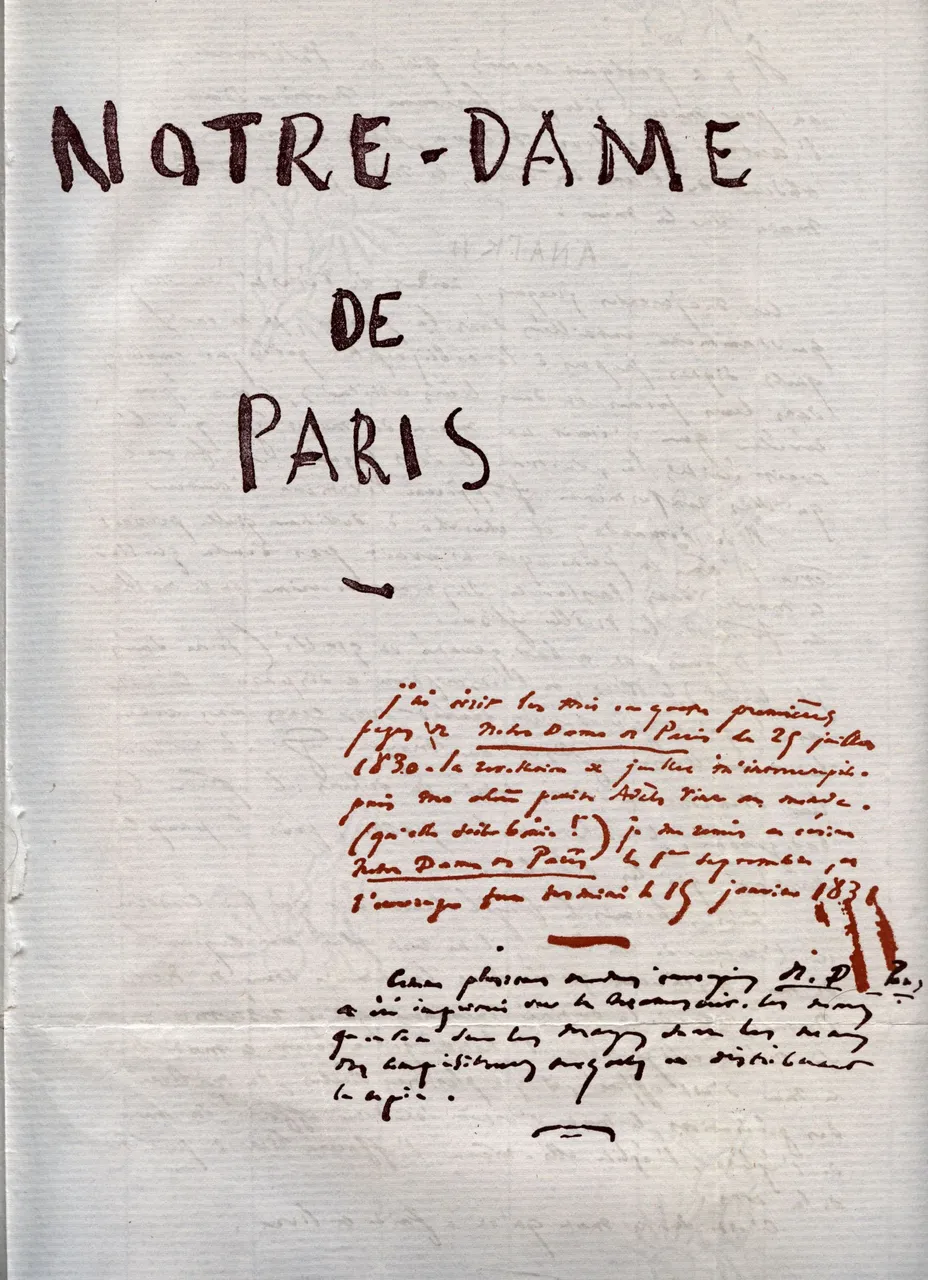
Notre-Dame de Paris,or The Hunchback of Notre-Dame along with Les Miserables, are two of Victor Hugo's most famous historical novels. In addition, they have been made into films, television and theatre on countless occasions.
Published in 1831, when Victor Hugo was just 29 years old, it was the French writer's first great success, totally identified with a humanist sense of society, defending the weakest and totally opposed to the death penalty.
A few hours after its publication by an Italian publisher, it was received with enormous success, easily overcoming the possible censorship of the time, which would later lead to the writer's exile.
The work is not only a tribute to Paris Cathedral but also a monumental reconstruction of the French capital, with its underworld and its poor and miserable aspect, which he would later repeat in Les Miserables.

The story begins at the end of the 14th century, more precisely on 6 January 1482, when a group of Spanish gypsies (including the beautiful Esmeralda) settle on the outskirts of Paris, in a place called the Court of Miracles, where they are masters and lords, They deceive and coerce the people, administer that portion of Paris as if it were their own fiefdom, and fear neither the police nor the power of the state, since the former never enters their domain and the latter refrains from challenging their power.
The gypsy tribe is led by the enigmatic and cruel Clopin Trouillefou, who is not only a cunning and charismatic beggar but also a ruthless murderer capable of sentencing to death those he holds responsible for a crime. Or who threaten to challenge his power.
People try to avoid this neighbourhood and have become accustomed to waking up to the sound of the bells of Notre-Dame which are masterfully handled by a hunchbacked and monstrously ugly young man called Quasimodo whom everyone calls The Hunchback of Notre-Dame in a show of disgust and revulsion. Quasimodo hangs on the bells of the bell tower (he has given each one a name) and rings them rhythmically. He is deafened by the noise.
No one communicates with him, except the archdeacon of the cathedral, Monsignor Frollo, who does so by means of a language based on gestures.
Quasimodo was abandoned as a child by his gypsy parents because of his deformed appearance and left at the church among the foundlings.
In the middle of the characters appears his brother Jean, who has become a gypsy, out of love for Esmeralda, who walks the streets of Paris with her little goat Djali, her smile and her eternal singing and good humour.
Frollo, who dogmatically hates gypsies, also falls in love with the young Esmeralda, as does Phoebus de Chateaupers, the captain of the Parisian guard.
Out of simple curiosity Gringoire, the political poet, ends up at the Court of Miracles, following Esmeralda when he is captured by them and subjected to a summary trial, condemned by Clopin Trouillefou to be hanged, but at the last moment he is saved by Esmeralda who claims him as her husband.
Quasimodo and Esmeralda develop a relationship of unrequited love for Quasimodo and sincere friendship for Esmeralda. Quasimodo loves her madly and does everything to see her happy.
Captain Phoebus, who nurtures a morbid passion for Esmeralda, gives her a date, hiding his real intentions, and when he tries to abuse her, Frollo, who had followed them and hidden in a cupboard, blind with madness and jealousy, rushes at the captain, stabbing him.
In prison where Esmeralda is being held accused of the crime, Frollo proposes that she submit to him in order to save herself. When Esmeralda learns that it is Frollo who has tried to kill Febo, she indignantly refuses and rejects the offer, preferring death to ignominy.
A crowd of gypsies gathers in front of Notre-Dame, with their leader Clopin at their head begging for clemency for the gypsy, and attack the cathedral trying to break down the door.
Quasimodo, believing that Esmeralda is in danger as he sees only torches and an angry crowd, begins to throw stones and molten lead at the crowd of gypsies who scatter.
King Louis XI, believing it to be a revolt to dethrone him, sends the gendarmes to put down the revolt and orders the execution of the arrested Esmeralda.
Esmeralda is condemned and dies on the gallows watched by Frollo from one of the towers of the cathedral, feeling sadistic pleasure. Quasimodo, however, notices him, sees that ferocious smile and lunges at him and throws him to his death.
Quasimodo disappears. No one finds him among the remains and the dead of the revolt. Later, however, it is discovered that he has gone to let himself die of grief in the cemetery where Esmeralda is buried.
Victor Hugo himself, in a masterly literary and theatrical stroke, describes the situation in these words:
"They found, among all these horrible corpses, two skeletons, one of which embraced the other individually. One of the skeletons, which was that of a woman, was still covered with the lapels of a tunic of a cloth that had been white, and a necklace of adrézarach could be seen around her neck with a small silk bag, decorated with green beads, which was open and empty. These objects were of so little value that the executioner certainly did not want them. The other, hugging this one tightly, was the skeleton of a man. They noticed that he had a deviated spine, his head wedged between his shoulder blades and one leg shorter than the other. On the other hand, there were no broken cervical vertebrae and it was clear that he had not been hanged. Therefore, the man to whom it had belonged had arrived there and died there. When they had made him detach himself from the skeleton he was hugging, he turned to dust."


La historia inicia a finales del siglo XIV, más precisamente el 6 de enero de 1482 cuando un grupo de gitanos españoles (entre los que se encuentra la hermosa Esmeralda) se instalan en las afueras de París, en un lugar llamado La Corte de los Milagros, donde son amos y señores, engañan y encautan a la gente, administran esa porción de París como si fuera un feudo propio, y no temen a la policía ni al poder que representa el estado ya que la primera no entra nunca en sus dominios y el segundo se abstiene de contrastar su poder.
La tribu de gitanos está dirigida por el enigmático y cruel Clopin Trouillefou, que no solo es un astuto y carismático mendigo sino que también es un despiadado asesino capaz de juzgar con la condena de muerte las personas que él retiene son responsables de algún delito. O que amenazan de contrastar su poder.
La gente trata de evitar ese barrio y se han habituado a despertarse al rumor de las campanas de Notre-Dame que son manejadas con su maestría por un joven jorobado y monstruosamente feo llamado Quasimodo al cuál todos llaman El Jorobado de Notre-Dame en una muestra de repulsión y asco. Quasimodo se cuelga de las campanas del campanario (ha bautizado a cada una con un nombre) y las hace sonar ritmicamente. A fuerza del rumor ha quedado sordo.
Ninguno comunica con él, a excepción del arcediano de la catedral Monseñor Frollo, quien lo hace a través de un lenguaje basado en gestos.
Quasimodo ha sido precisamente de pequeño abandonado por sus padres gitanos por su aspecto deforme y dejado a a la iglesia entre los niños expósitos.
En medio de los personajes aparece su hermano Jean, que se ha convertido en gitano, por amor hacia Esmeralda, quien recorre las calles de Paris con su cabrita Djali, su sonrisa y su eterno canto y buen humor.
Frollo que por principios dogmáticos odia a los gitanos también se enamora de la joven Esmeralda lo mismo que Phoebus de Chateaupers, el capitán de la guardia parisina,.
Por simple curiosidad Gringoire, el poeta político, termina en la Corte de los Milagros, siguiendo a Esmeralda cuando es capturado por éstos y sometido a un juicio sumario es condenado por Clopin Trouillefou a la horca, pero a último momento es salvado por Esmeralda que lo reclama como marido.
Entre Quasimodo y Esmeralda se instaura una relación de amor no correspondido por parte del primero y sincera amistad por parte de la segunda. Quasimodo la ama con locura y hace de todo por verla contenta.
El capitán Phoebus que nutre por Esmeralda una pasión morbosa le da una cita escondiendo sus reales intenciones y cuando trata de abusar de ella Frollo que los había seguido y se había escondido en un armario, ciego de locura y celos se abalanza sobre el capitán apuñalándolo.
En prisión donde se encuentra detenida Esmeralda acusada del crimen, Frollo le propone someterse a él para salvarse. Cuando Esmeralda se entera de que es Frollo quien ha intentado matar a Febo, se niega indignada. y rechaza la oferta prefiriendo la muerte a la ignominia.
Una multitud de gitanos se reúne frente a Notre-Dame, con su jefe Clopin a la cabeza pidiendo clemencia para la gitana, y atacan la catedral intentando derribar la puerta.
Quasimodo, creyendo que Esmeralda está en peligro ya que al no escuchar solo ve antorchas y una multitud enfurecida comienza a lanzar piedras y plomo fundido a la multitud de gitanos que se disperan.
El rey Luis XI creyendo es una revuelta para destronarlo mandar los gendarmes para sofocar la revuelta y ordena ejecutar la detenida Esmeralda.
Esmeralda es condenada y muere en la horca observada por Frollo desde una de las torres de la catedral, sintiendo un placer sádico. Sin embargo Quasimodo, lo advierte, ve esa sonrisa feroz y lanzándose contra él lo arroja al vacío provocando su muerte.
Quasimodo desaparece. Ninguna lo encuentra entre los restos y muertos de la revuelta. Sin embargo más tarde se descubrirá que ha ido a dejarse morir de pena en el cementerio donde ha sido enterrada Esmeralda
El mismo Víctor Hugo, en un golpe literario y teatral maestro, describe la situación con estas palabras:
"Encontraron, entre todos esos horribles cadáveres, dos esqueletos, uno de los cuales abrazaba al otro individualmente. Uno de los esqueletos, que era el de una mujer, seguía cubierto con unas solapas de una túnica de una tela que había sido blanca, y se veía un collar de adrézarach alrededor de su cuello con una pequeña bolsa de seda, decorada con cuentas verdes, que estaba abierta y vacía. Estos objetos eran de tan poco valor que el verdugo ciertamente no los quería. El otro, abrazando a éste con fuerza, era el esqueleto de un hombre. Se dieron cuenta de que tenía la columna vertebral desviada, la cabeza encajada entre los omóplatos y una pierna más corta que la otra. Por otro lado, no tenía ninguna vértebra cervical rota y estaba claro que no había sido ahorcado. Por lo tanto, el hombre al que había pertenecido había llegado allí y había muerto allí. Cuando hicieron que se desprendiera del esqueleto al que se abrazaba, se hizo polvo."

